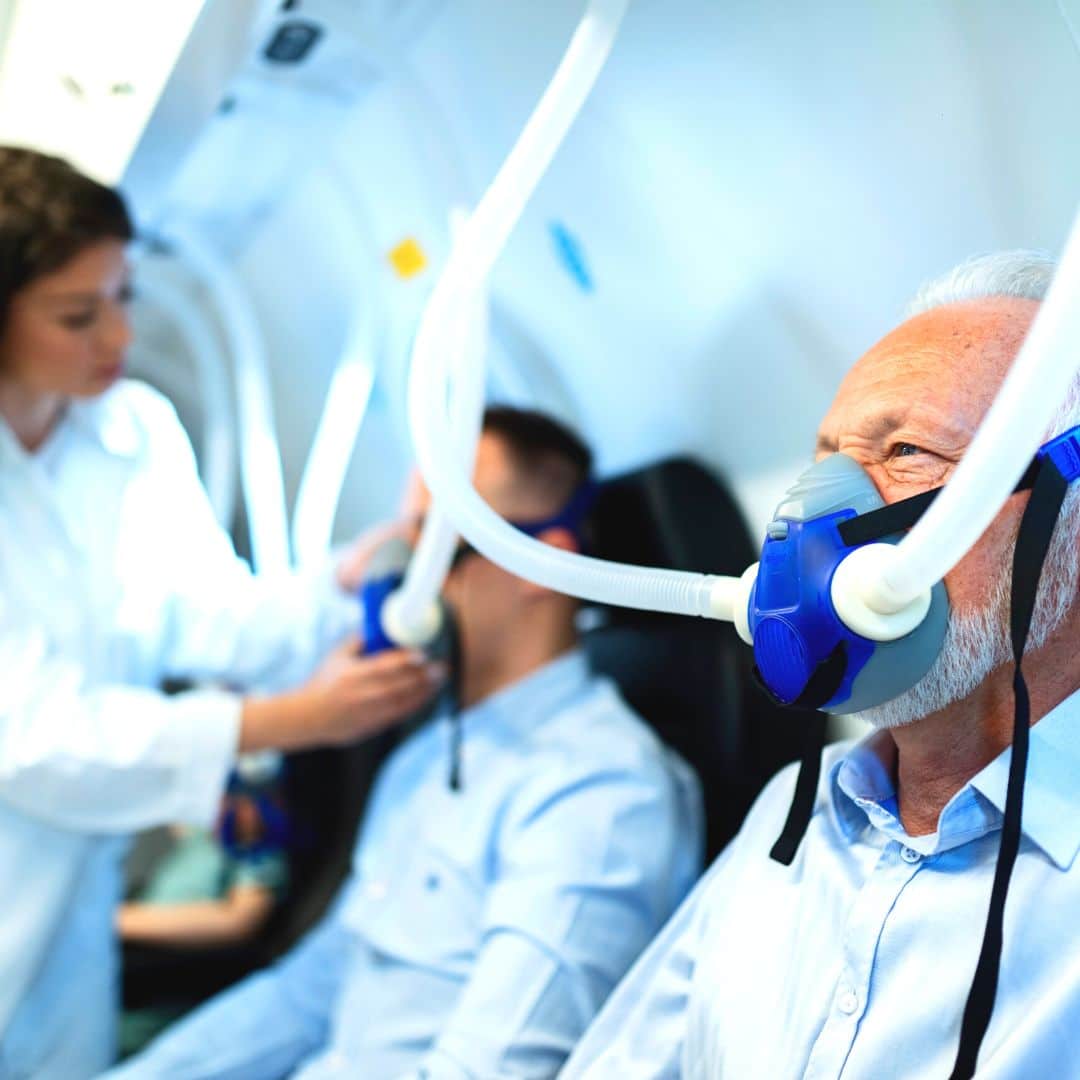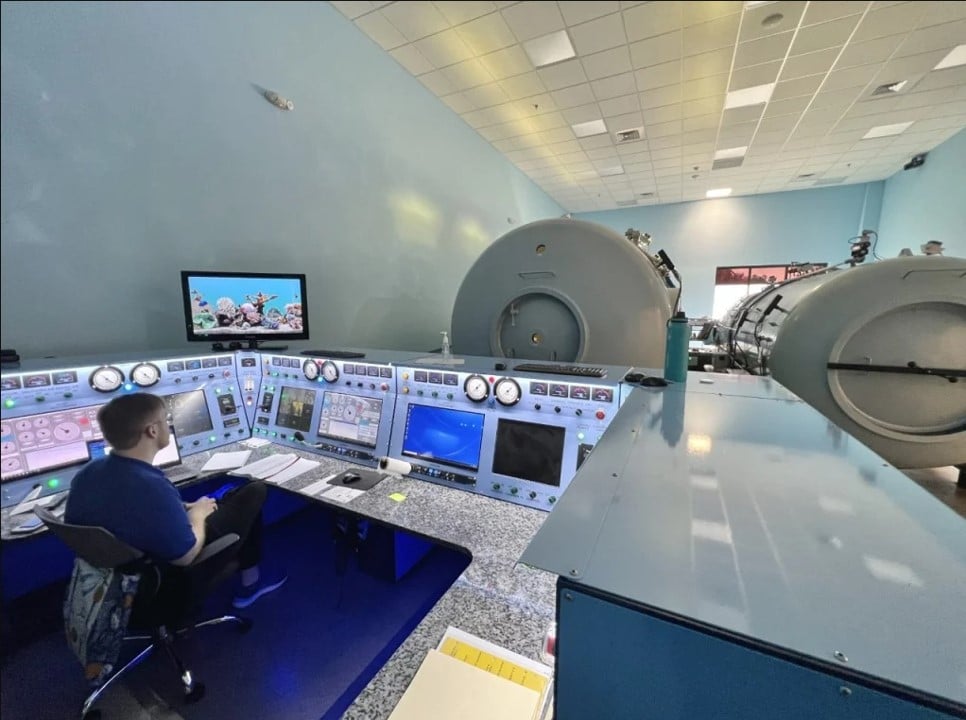Restore Cardiac Function after Long COVID with HBOT
In the wake of the COVID-19 pandemic, an alarming number of individuals have experienced lingering symptoms and complications long after recovering from the initial infection. Termed “long COVID” or “post-acute sequelae of SARS-CoV-2 infection” (PASC), this perplexing condition has left many patients grappling with a range of persistent health issues. From chronic fatigue and respiratory difficulties to neurological impairments, the long-lasting effects of COVID-19 continue to pose challenges for medical professionals worldwide.
However, amidst this ongoing battle, recent studies have shed light on a promising treatment approach for long COVID patients: hyperbaric oxygen therapy (HBOT). Traditionally utilized for healing wounds and treating conditions such as decompression sickness, carbon monoxide poisoning, and non-healing ulcers, HBOT has garnered attention for its potential in restoring heart function in individuals experiencing long COVID-related cardiac complications.
As we navigate the uncharted territory of long COVID, it is vital to remain vigilant in exploring innovative approaches that offer hope for recovery. Hyperbaric oxygen therapy’s ability to restore heart function presents a glimmer of optimism for patients seeking relief from the lingering effects of COVID-19.
Long COVID, or post-COVID conditions, refers to a wide range of new or recurrent health problems people may experience after infection with SARS-CoV-2, the virus that causes COVID-19.
A host of persistent symptoms includes abnormal heartbeats and a heightened risk of developing cardiovascular dysfunction.
A team of researchers ran a small study analyzing how inhaling highly pressurized, pure oxygen affects the heart function of long COVID patients.
They found that hyperbaric oxygen therapy may help the heart improve cardiovascular contractions in this population.
Professor Marina Leitman, MD, of the Sackler School of Medicine at Tel Aviv University and Shamir Medical Center, Be’er Ya’akov, Israel, who led this study, presented her team’s findings in May 2023 at EACVI 2023, a conference held by the European Society of Cardiology (ESC), though they have not yet been peer-reviewed.
How to measure cardiac function
The study’s authors assessed global longitudinal strain (GLS), a sensitive but uncommon measure of cardiac function.
Medical News Today spoke about GLS with Dr. Jayne Morgan, a cardiologist and clinical director of the COVID Task Force at the Piedmont Healthcare Corporation in Atlanta, Georgia, who was not involved in the present study.
“GLS is a measure of cardiac function that can guide a physician’s expectations of the clinical course in patients who may have normal left ventricular function yet remain symptomatic. An abnormal GLS value can be associated with an increased long term cardiac risk for patients,” Dr. Morgan explained.
A healthy heart will show a GLS value of around -20%, meaning that the heart is contracting and relaxing properly in the longitudinal direction.
A lower GLS value indicates that the heart is not functioning as effectively as it should.
While most people who have COVID-19 fully recover, about 10-20% of them develop long COVID, also known as post-COVID syndrome. This can be diagnosed at least three months after someone develops initial COVID-19 symptoms.
Long COVID symptoms include shortness of breath, brain fog, depression, and many cardiovascular issues.
Those with long COVID can also face a greater risk of developing heart disease, heart failure, and related conditions.
According to a 2022 study, such symptoms have even manifested in people with no previous heart problems or high risk of cardiovascular disease.
How does hyperbaric oxygen therapy work?
HBOT involves breathing 100% oxygen while inside a hyperbaric oxygen chamber. The air we normally breathe consists of 21% oxygen.
The air pressure inside the chamber is elevated to a higher level than normal air pressure. The increased pressure helps the lungs and oxygen-deprived tissues absorb more oxygen, which promotes healing.
In the U.S., the Food and Drug Administration (FDA) regulates hyperbaric chambers and the oxygen used in HBOT.
HBOT is an established treatment for non-healing wounds, radiation injury, and decompression sickness in divers. Another small study published in 2021 found that this treatment may help treat long COVID symptoms.
However, the FDA has not currently cleared this therapy for treating COVID-19 or related conditions.
The study’s methods
Dr. Leitman and her cohorts enlisted 60 long COVID patients with symptoms persisting for at least three months after having mild to moderate COVID-19. They included hospitalized and non-hospitalized individuals.
The researchers randomly assigned the subjects to HBOT or a sham procedure in a 1:1 ratio. Each person had five sessions weekly over eight weeks.
The HBOT group received 100% oxygen at a pressure of 2 atmospheres for 90 minutes, with 5-minute breaks every 20 minutes. The sham group had 21% oxygen at 1 atmosphere for 90 minutes with no break.
Further, all the participants underwent echocardiography to measure GLS before the first HBOT session and 1 to 3 weeks after the last.
At the study’s baseline, 29 out of the 60 participants had an average GLS value of -17.8%. Sixteen were in the HBOT group, and 13 were in the sham group.
The study’s results
After the treatments, the average GLS among the intervention group increased to -20.2%. Among the sham group, the average GLS also increased to -19.1%. Only the former measurement was significantly different from the measurement at the start of the study.
Dr. Leitman observed that almost half of long COVID patients had impaired cardiac function at baseline according to GLS.
However, all the study participants had a normal ejection fraction, which is the standard measure of how well the heart contracts and relaxes while pumping blood.
“This means that ejection fraction is not sensitive enough to identify long COVID patients with reduced heart function,” Dr. Leitman said.
Oxygen therapy may be beneficial
Dr. Morgan said the study’s findings “appear to trend toward positive outcomes with hyperbaric oxygen therapy.”
However, she cautioned that “Hyperbaric oxygen is not a generalized standard therapy and will require further scrutiny.” Further, she noted that some research has raised “concern over a possible increase in arrythmias.”
Dr. Leitman and fellow researchers concluded that hyperbaric oxygen therapy can be beneficial in long COVID patients.
“More studies are needed to determine which patients will benefit the most, but it may be that all long COVID patients should have an assessment of global longitudinal strain and be offered hyperbaric oxygen therapy if heart function is reduced,” she added.
Dr. Leitman also hopes that further studies can gather long-term results and help health experts determine the optimal number of HBOT sessions.
Contact Extivita today to begin your Long COVID healing journey!


